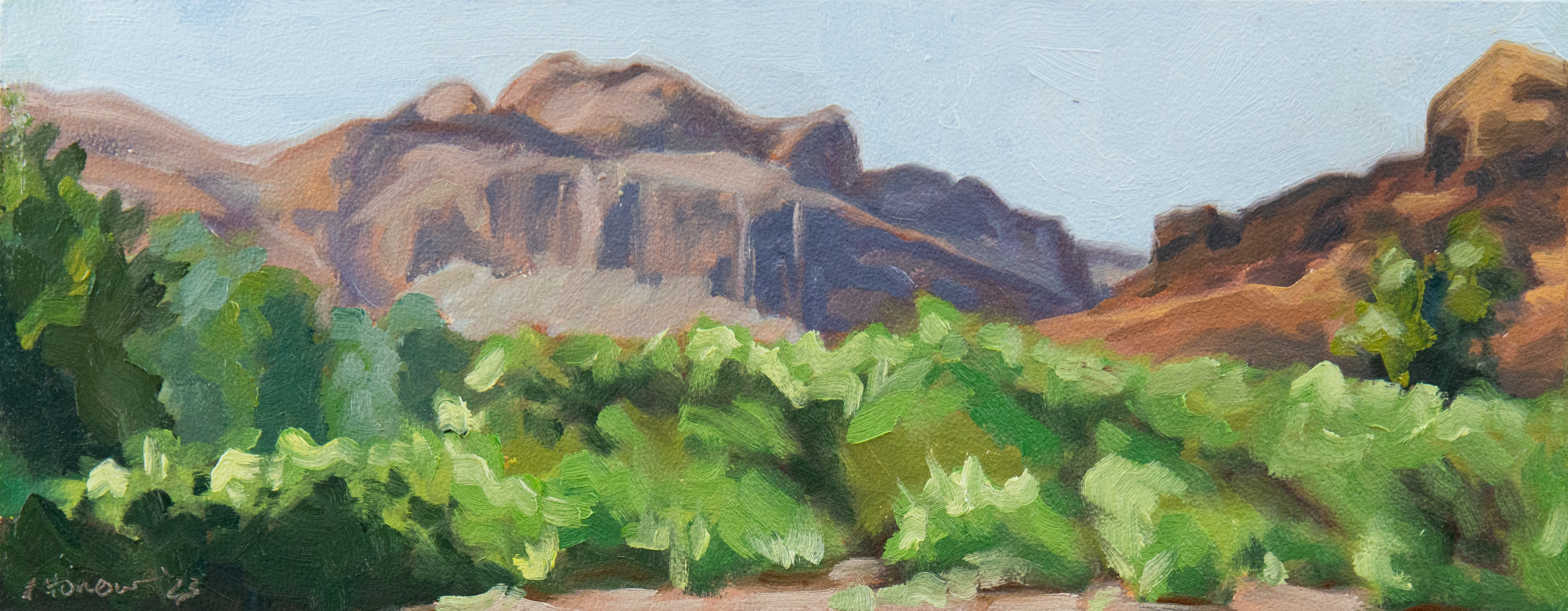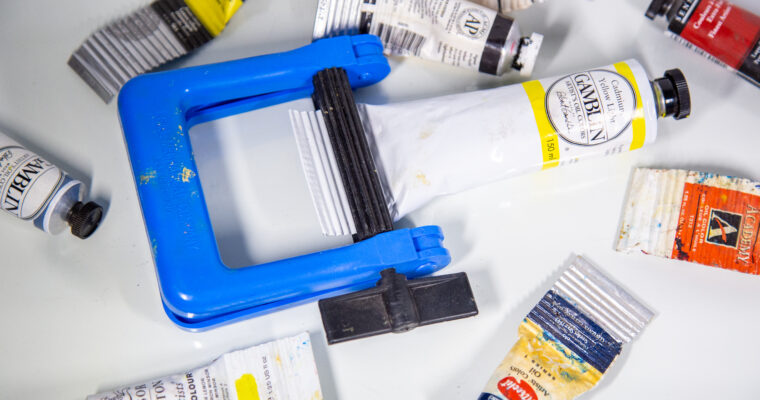When I typically think of oil painting supplies, I think of various brands of oil paint, mediums, brushes, and surfaces. But there are a lot of peripheral items that can make oil painting easier and more enjoyable. Below are my favorite items that make my painting experience all that much better.

Derwent Pastel Pencils – Loving these lately for sketching on large canvases before I start painting. They’re water-soluble, so if I don’t like a line or want to start over, I can just wipe off what I don’t like with a wet rag. Using an eraser on a canvas can put too much pressure on a single spot and dent the canvas. A wet rag or brush is a more gentle way to erase. This is very helpful if I want to change the composition or just get an accurate rendering. When I’m ready to paint, I don’t need to seal the pastel or do anything to keep it from smearing. I can just start painting and my sketch disappears under the paint.

Tube Wringer – So, so satisfying. Plus it saves money when you can get every last bit of paint out of the tube. Mine is just a cheap $6 one that I picked up a few years ago, but there are metal ones available. I think Amazon has a bunch of affordable ones for toothpaste if you don’t want to pay the artist mark-up.

Winsor & Newton Artguard – Honestly, any barrier cream. It keeps the oil paint from sticking to your hands so washing your hands is faster and easier. This is an alternative to using gloves, which I always use when working in an environment where I can’t easily wash my hands or I expect to need to drop what I’m doing at a moment’s notice (ie when I’m painting while I work at the gallery).

Masterson Palette Box and Glass Palette – I know these are technically two separate things, but they go hand in hand. The Masterson box has an airtight lid that slightly slows down the rate at which paint dries on the palette. Keeping the palette covered also keeps dust and other debris from dirtying it and keeps me from accidentally setting stuff down in wet paint. As an added bonus, it prevents my cat from walking through wet paint when I’m not around. A glass palette is lovely to mix paint on and is simple to clean with a razor blade. I’ve tried wood, disposable, as well as various things like wax paper, freezer paper, tin foil, and plates. In my opinion, nothing gets the job done as well as a glass palette. If you’d like to read an in-depth review of this, check out my full review.

Sienna Pochade Box w/ Glass Palette – This little box is wonderful to use. It doesn’t get in the way of painting like I’ve seen some other plein air easels do. Painting outside or just away from your perfectly set up studio is difficult enough, but using a well-thought-out and well-constructed pochade box removes a lot of hurdles. This box is about $150 on amazon.com (non-afiliate link).

A Plant Light – Here me out. The light I have has three full spectrum daylight bulbs, each on its own adjustable gooseneck that I can position to light my painting as well as my palette. It’s important that the light be a full spectrum daylight color to mix the most accurate colors. As soon as I started using daylight bulbs to paint with, color mixing finally “clicked” with me. Before, I would start a painting with natural daylight before switching to your standard light bulb, or vice versa. Every time the source of my light changed, how I perceived the color would change. So I’d spend an entire painting session frustrated with color, making it look correct in one light, only to have to change it again once my light changes again. By always painting in daylight, my colors aren’t affected by the shifting temperatures of different bulbs and my colors look more natural in any lighting situation. You can certainly buy an artist’s light, but the plant light is cheaper and works just as well. It’s another artist mark-up situation here.

Shop Towels – I’ve been using the blue Shop Towels you can buy at auto stores since I started oil painting in 2005. Occasionally, I’ve run out and used normal paper towels and was very disappointed. The shop towels are durable, lint-free, and very absorbent. Alternately, you can also use Viva paper towels, but I like the Shop Towels because everyone in my home knows they’re for oil painting and doesn’t use them (except for my husband, who uses them for occasional mechanic work). If you have kids, then you know how paper towels tend to disappear.

Lava Soap – Speaking of things you buy at an auto parts store, I also like to use Lava soap. It is designed to scrub oil off your skin and does a damn good job at it. I also use a nail brush to make sure I get all of the paint out from under my nails and scrub at any stubborn paint on my skin. Like the shop towels, I’ve been using this since I was first introduced to oil paint in 2005 and have found no reason to use anything else. It just does exactly what it’s supposed to do.

Palette Knives – An absolute must-have for oil painting. I don’t use them for actual painting, just color mixing, but I find them truly indispensable. Especially now that I’m working larger and need to mix huge piles of paint at once.

Airtight Brush Washer – I have two of these sweet little containers. One holds walnut oil that I use to clean my brushes during a paint session and the other contains Gamsol that I use for a final brush clean at the end. These containers are great because they have a cup with holes in the bottom that let the heavier pigments settle to the bottom and keep the top oil/solvent relatively clean. The lids also have a latch on each side that hold a gasketed lid tightly in place, preventing any spills. This is nice to have in a studio setting, but absolutely essential in a mobile setup. These pair perfectly with my pochade box for traveling around.
Let me know what your essential oil painting tools are in the comments below. I’d love to hear what other people are using and hey, we might all get some new ideas.


Leave a Reply